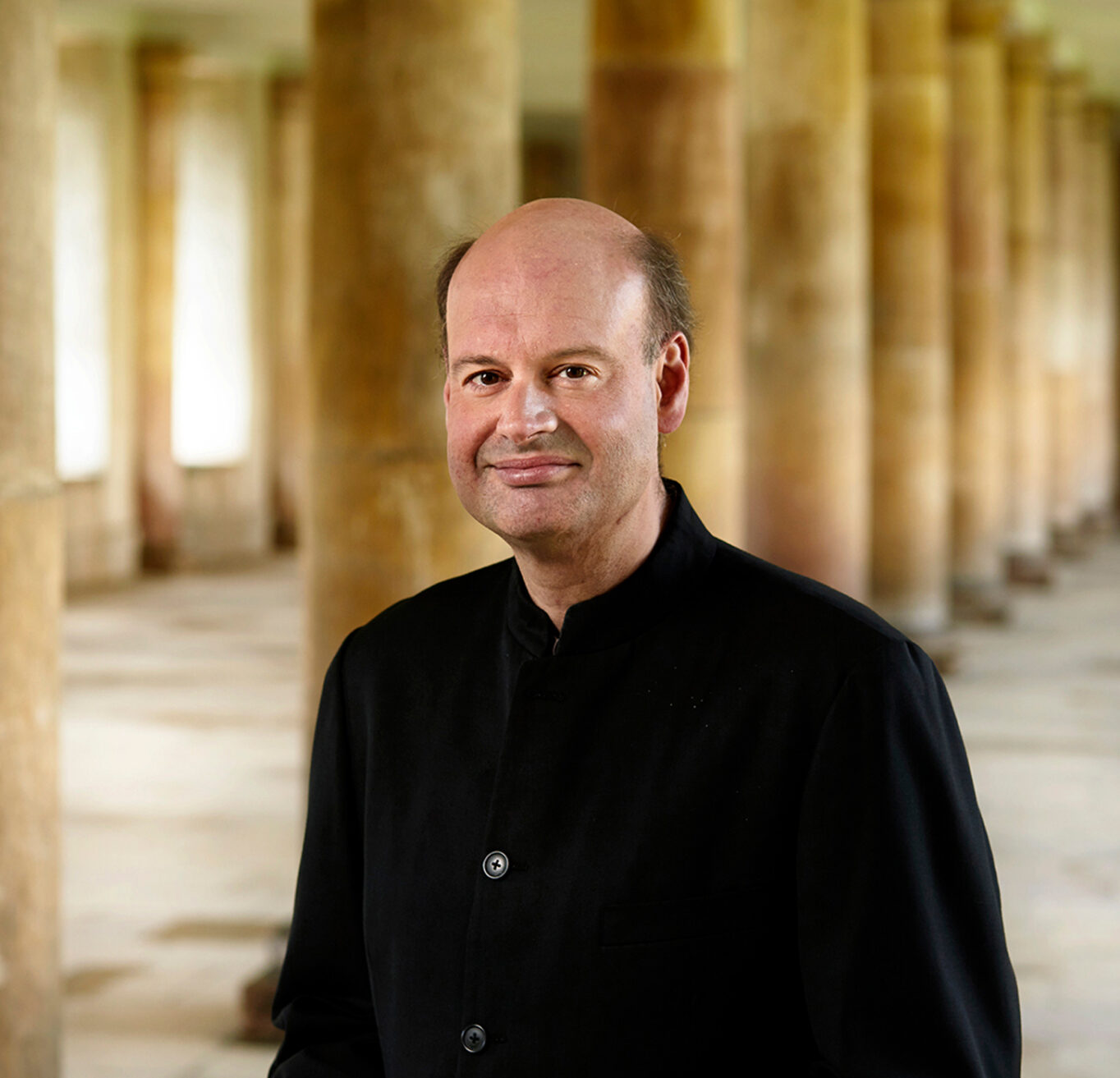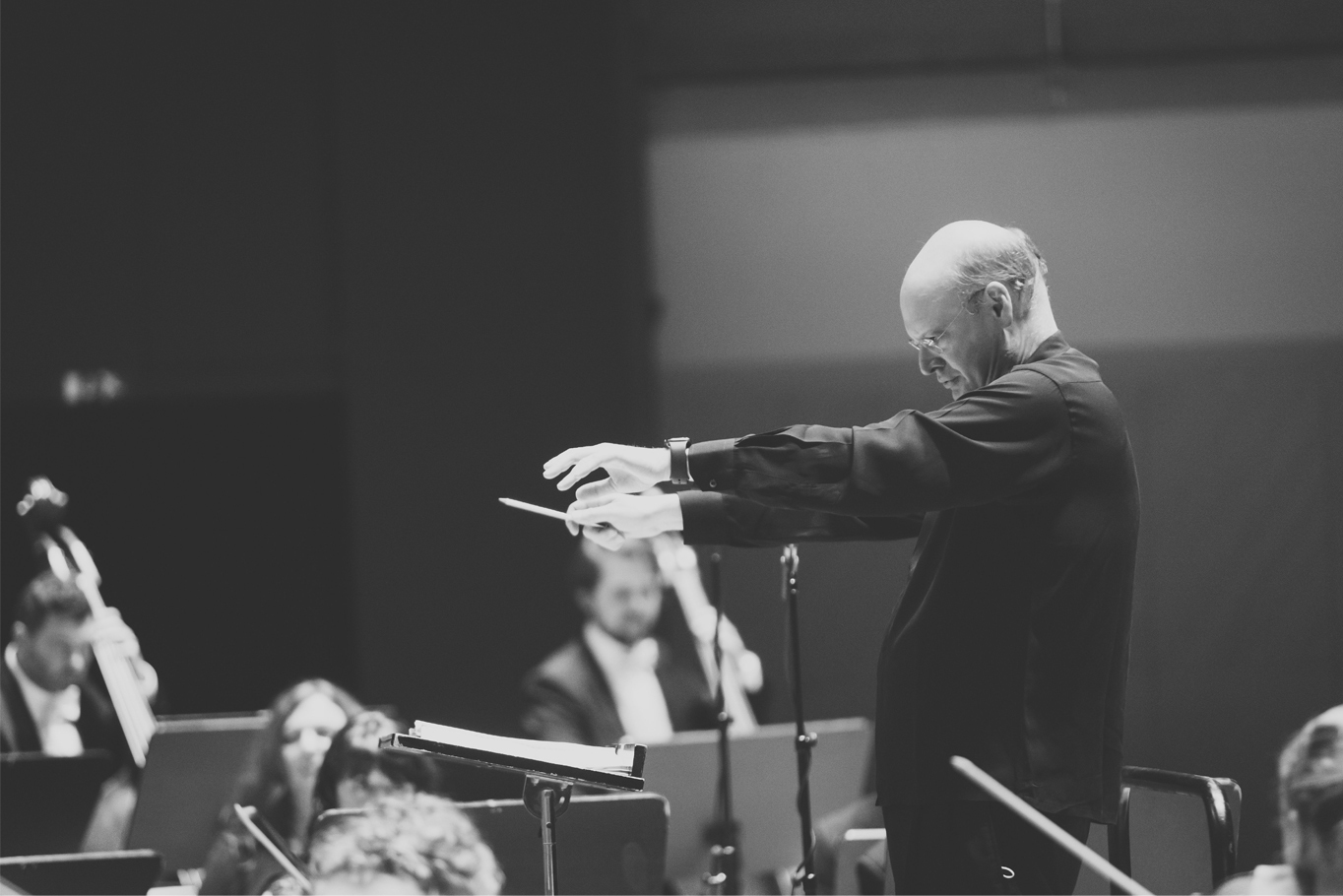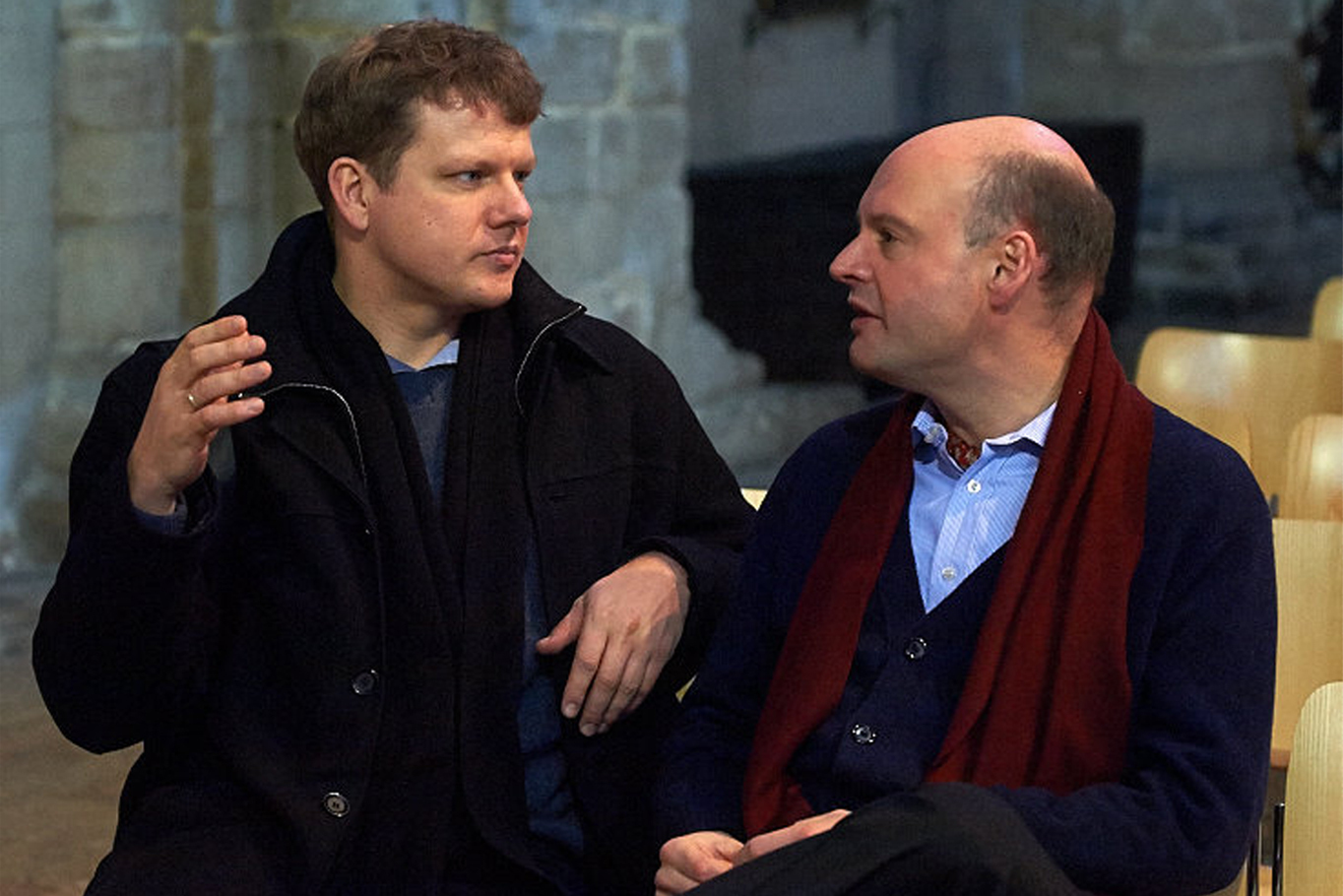
Stephen Layton on the Genius of Bach and the Music of Heaven
27 March, 2023
Stephen Layton, one of the world’s great choral conductors, explores the invention and impact of Bach, the magnificence of his Magnificat, and the extraordinary power of Ēriks Ešenvalds ahead of his concerts with the Sydney Symphony.
By Hugh Robertson
The genius of Johann Sebastian Bach can often get overlooked.
It’s not that people don’t appreciate his talent. It’s just that his output is so vast, his contribution to Western music so profound, that if you start to think about it even for a second you become overwhelmed by the immensity of the achievement.
Stephen Layton has spent more time than most grappling with Bach’s brilliance. For 30 years Layton has been at the forefront of choral music as founder and director of Polyphony and director of music at Trinity College, Cambridge, revitalising the great classics and commissioning modern composers.
Layton returns to Sydney this week to conduct the Sydney Symphony Orchestra in three concerts that demonstrate the breadth of his artistry, with Bach’s Magnificat and Passion and Resurrection by Ēriks Ešenvalds, a contemporary Latvian composer very close to Layton’s heart. But before we can talk about Ešenvalds and modern choral music, we have to go back to where it all began…

“This is slightly tongue in cheek, but I say to students that Bach must have been writing this stuff at every waking moment,” says Layton with a grin. “He must have been writing fugues when he was doing his ablutions – there is such a vast amount of material. It seems incomprehensible, even with the multitasking of the 21st century, how he did this.”
“So how did it happen? I think that's a fascinating question, and I think the answer is really to do with faith. His own faith. He believed in God. It's not so fashionable today to believe in God, but I think that belief in God gave him an unshakeable purpose in everything he did. Whenever he might have had the doubts that we all have about anything in life, he had this rock that he stuck by.”
Religion was both a personal and professional matter for Bach. He was born in 1685, when the huge shocks of the Reformation were still reverberating across Europe. Bach’s family were Lutherans, one of the new Protestant sects formed in the schism with the Catholic Church. And throughout his career, Bach was employed as a composer for the Lutheran church, the peak of his career coming when he was Thomaskantor in Leipzig, responsible for composing music for the city’s four main Lutheran churches, as well as the university's student ensemble – a hugely demanding job that required Bach to produce a mountain of music.
His Magnificat in D was composed in 1723, his first year in Leipzig, and in many ways encapsulates Bach’s genius. This is a work written for a church service, as were many hundreds of pieces that he composed. The text sung by the soloists and choirs is taken directly from the Bible, and the work as a whole has a very specific purpose – to tell a Biblical story to the congregation. But as always with Bach, the magic is in how he was able to take a workmanlike assignment and produce something of extraordinary beauty.
“The Magnificat is from Luke's Gospel, in the New Testament, and it’s the moment that Mary realised that she's been chosen to be the mother of Jesus Christ,” says Layton. “And that text has become the basis for several of the most sacred hymns in the Christian Church, from Orthodoxy to Roman Catholicism to Protestantism. It is a sort of central unifying text of all those different variations of the Christian faith.”
“In Bach's time they would have used the Magnificat on big occasions, when there's a big feast to celebrate something. So it wasn't original – it wasn't the first time a Magnificat had been written, far from it. There have been many, many before. And really by writing it, he was just fulfilling a necessary function in the liturgy of the Church of the service.”
Of course, Bach being Bach, this necessary function was executed with extraordinary flair and invention. He was not only grounding his new work in music from ancient times, harking back to the very earliest days of the church, but also reshaping it into something new.
“When you listen to the Magnificat, there are a lot of things that are calling up ancient things of the Church,” Layton explains. “He draws on Gregorian chant, which of course emanated from the Roman Catholic church. By the time Bach is composing, Germany is both Catholic and Protestant. But where Bach is working, of course, he's a Protestant, a Lutheran, and some of the chants from the Gregorian or Roman Catholic Church had been adopted by Luther in the German language, as well as in Latin.”
“In the Magnificat Bach uses a plainsong chant that is one from the ancient Roman Catholic church, called the tonus peregrinus. And it’s interesting to think of him conjuring up melody from the history of the church and putting it in a modern context. To the people listening to the time, they'd have recognised what really was an ancient chant set in this modern context.”
“They used to say of Bach that he was ‘les goûts unis’, ‘the tastes united’."
“This chap Bach would write a French overture, an Italian this, an English this, a German this, and bring it all together. I think that's very noticeable in the Magnificat where you see these different styles of music that he's choosing to bring together. Which you kind of need, of course, when you're doing an extended piece – you’ve got to draw on all these different styles and structures to bring it together into one perfect tapestry.”
Layton also takes pains to point out that, despite the work’s original purpose, the Magnificat stands alone as a piece of music – it doesn’t need a religious framework to be meaningful, and in fact it would not have survived 300 years of changing musical and social fashions if it were beholden to Lutheran church services.
“We don’t need to try to infuse it with any sense of religiosity,” says Layton. “It stands without any of that, really. But I think what's important – as somebody who happens to basically believe what I think Bach believed – is that it's quite useful to have that spirit and faith in the piece, whether it be a concert or a church. That's the common denominator.”
“On a deeper level, which is harder to express and qualify, I think it gives some of us a doorway into what I've called ‘the other’. This is music that makes people constantly want to keep trying to open the door and see the other side. We all hear different things about what we think the doorway is when we're listening to the music, but for me, the end of this work is one of those moments when I think I'm looking at this doorway and wondering what's across the other side.”
The other major work in this concert is Ēriks Ešenvalds' Passion of Resurrection, a piece that Layton knows intimately, and champions around the world. One of the features of Layton’s career has been his promotion of works by composers from the Baltic region: performances and recordings of works by Ešenvalds, Arvo Pärt, Uģis Prauliņš and Veljo Tormis have won countless awards and accolades. As classical music magazine Gramophone wrote in 2016, the fact that Baltic music is now “an accepted – even expected – part of today’s choral catalogue owes an awful lot to Layton”.

Layton acknowledges that audiences can often have some sense of trepidation about new music, but he is quick to sing the praises of Ešenvalds, and this piece in particular.
“I think the first thing to say is it's not something that's going to frighten you, if you feel that your tastes are fairly reserved,” he says with a smile. “Ešenvalds quotes music by Cristóbal de Morales, a Renaissance European composer, and then sets against it what I would simply call Baltic, chilled, cold, cool string writing in the beginning.”
“So you start with an early music sound, and then the strings shimmer in from another world. I think they are probably from today's world, and the pains of it, but somehow the ancient music is timeless, strong, rock solid.”
Passion and Resurrection tells the story of Jesus’ crucifixion and resurrection, told primarily through the eyes of Mary Magdalene. For Christians, this is the miracle of miracles that proves not only Jesus’ divinity, but his sacrifice that paves the way for eternal life in Heaven. Many composers have set this moment to music before, but for Layton, Ešenvalds has managed to get as close to capturing the feeling of that miracle in music as anyone.
“When I first heard this piece of music I just knew that I wanted to perform it as soon as I possibly could. The ending in this piece is something else. Ēriks Ešenvalds manages to create an epiphany, a moment of extraordinary revelation.”
“When I first heard this, I nearly wept. It is a bit of a cliche, but this music is taking you to heaven.”
“That's the connection between these two pieces, to me. This is music of faith from both of these composers. Credo in unum deum, ‘I believe in one God’. And I hope that listeners feel, and can take away with them, a thoughtfulness that, in spite of all that we find in life today, this music is somehow suggesting to us that it's all worth it.”
